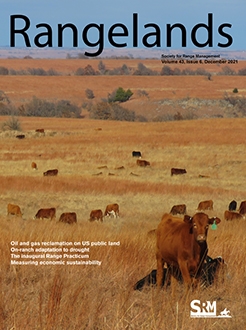There are three general stages of a well's life on US public land: 1) the permitting process to drill, 2) active extraction of fossil fuel resource, and 3) plugging and abandonment of well.
There is no national standard for oil and gas reclamation in the United States similar to mining and therefore current reclamation practices and standards fail to achieve long-term effectiveness across the western United States.
A reclaimed well pad's land potential is determined by 3 properties: static (e.g., climate), dynamic (e.g., soil stability), and process (e.g., water retention).
Understanding a reclaimed well pad's land potential enables federal land agencies to outline surface reclamation goals and requirements consistently and clearly.
Monitoring for land potential increases the capacity of the private industry to practice adaptive management by enabling companies to respond to plant community changes while maintaining long-term progress toward recovery.
How to translate text using browser tools
22 December 2021
Oil and Gas Reclamation on Us Public Lands: How It Works and Improving the Process with Land Potential Concepts
Sean Di Stéfano,
Jason W. Karl,
Michael C. Duniway,
Robert Heinse,
April Hulet,
J.D. Wulfhorst
ACCESS THE FULL ARTICLE

Rangelands
Vol. 43 • No. 6
December 2021
Vol. 43 • No. 6
December 2021
land potential
monitoring oil and gas
reclamation




